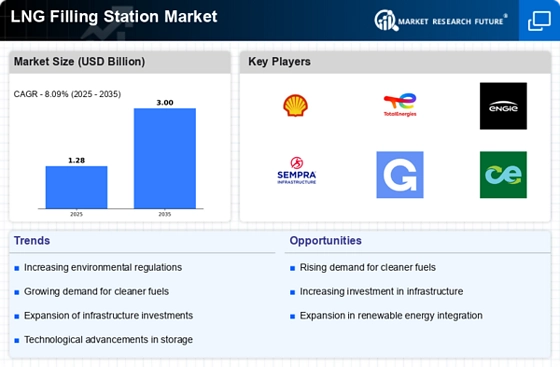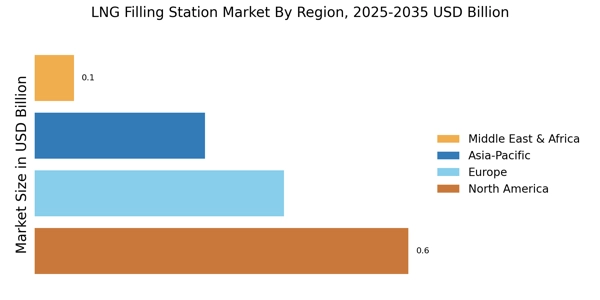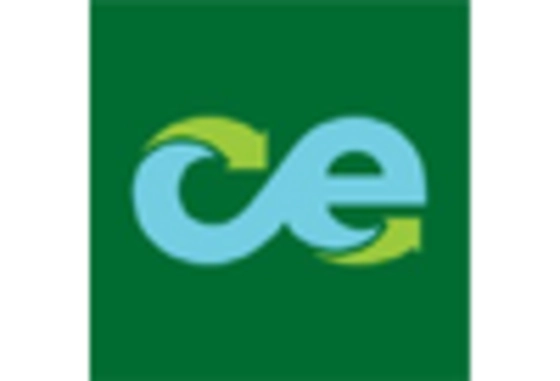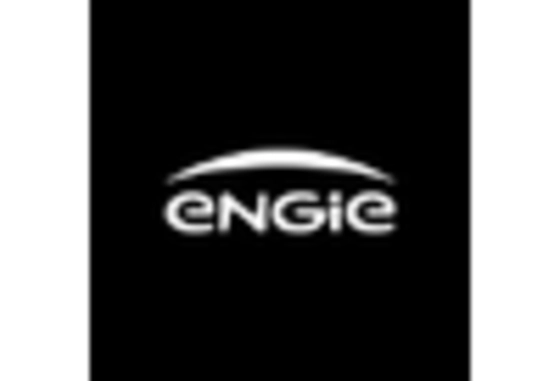Increasing Environmental Regulations
The LNG Filling Station Market is experiencing a surge in demand due to increasing environmental regulations aimed at reducing greenhouse gas emissions. Governments are implementing stricter policies to promote cleaner fuels, which positions LNG as a viable alternative to traditional fossil fuels. This regulatory push is likely to drive investments in LNG infrastructure, as companies seek to comply with environmental standards. In many regions, the transition to LNG is seen as a critical step towards achieving national and international climate goals. As a result, the LNG Filling Station Market is expected to expand, with more stations being established to meet the growing need for cleaner energy solutions.
Rising Adoption of Natural Gas Vehicles
The LNG Filling Station Market is benefiting from the rising adoption of natural gas vehicles (NGVs). As consumers and businesses increasingly recognize the economic and environmental advantages of NGVs, the demand for LNG filling stations is likely to grow. According to recent data, the number of NGVs has been steadily increasing, with projections indicating a potential doubling of NGV fleets in the coming years. This trend is expected to create a robust market for LNG filling stations, as more infrastructure is needed to support the expanding NGV market. Consequently, the LNG Filling Station Market is poised for significant growth as it aligns with the shift towards sustainable transportation.
Economic Viability of LNG as a Fuel Source
The LNG Filling Station Market is also driven by the economic viability of LNG as a fuel source. With fluctuating oil prices, LNG has emerged as a cost-effective alternative for transportation and industrial applications. The price stability associated with LNG, coupled with its lower emissions profile, makes it an attractive option for fleet operators and businesses. As more companies recognize the potential cost savings and environmental benefits of switching to LNG, the demand for LNG filling stations is expected to rise. This economic rationale is likely to propel the LNG Filling Station Market forward, fostering further investment in infrastructure.
Government Incentives and Support Programs
Government incentives and support programs are significantly influencing the LNG Filling Station Market. Many governments are offering financial incentives, tax breaks, and grants to encourage the development of LNG infrastructure. These initiatives are designed to promote cleaner energy solutions and reduce reliance on traditional fossil fuels. As a result, the establishment of LNG filling stations is becoming more financially feasible for investors and operators. The presence of supportive policies is likely to stimulate growth in the LNG Filling Station Market, as stakeholders capitalize on these opportunities to expand their operations and enhance service offerings.
Technological Innovations in LNG Infrastructure
Technological innovations are playing a pivotal role in the LNG Filling Station Market. Advances in liquefaction and storage technologies are enhancing the efficiency and safety of LNG filling stations. Innovations such as automated refueling systems and improved cryogenic storage solutions are making LNG more accessible and user-friendly. These developments not only reduce operational costs but also improve the overall customer experience. As technology continues to evolve, the LNG Filling Station Market is likely to see increased investment and expansion, as stakeholders seek to leverage these advancements to enhance service delivery and operational efficiency.



















Leave a Comment